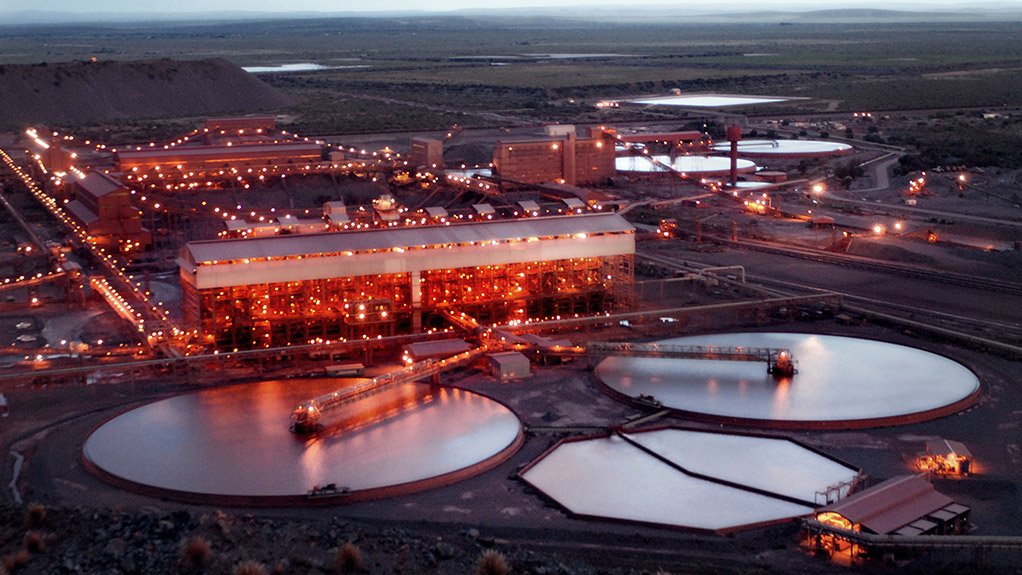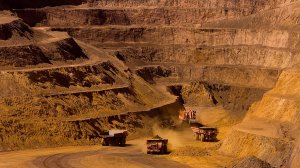West Africa must overcome major challenges to become the new Pilbara


Core Mining general counsel Robina Kaye discusses how the company is seeking to overcome the logistical challenges of transporting iron-ore from its Avima project in the Republic of Congo
AFRICA VS AUSTRALIA Australia exported 521-million tons, which represented 46% of the global iron-ore export market, while Africa exported 72-million, which is less than 2% of global iron-ore export market
West Africa has the potential to emerge as a serious competitor to the mineral-rich Pilbara region, north of Western Australia, but has to overcome several significant infrastructural and logistical challenges to achieve this.
This was the general consensus among members of a panel discussion on the future prospects of West Africa’s wealth of iron-ore resources, held at the second Metal Bulletin Events African Iron Ore conference, in Johannesburg, last month.
The panel, chaired by private investment holding company Jonah Capital CEO John Barton-Bridges, comprised iron-ore developer Equatorial Resources CEO John Welborn, Germany-based metals and steel intelligence services provider Mineral Value Service MD James Rilett and iron-ore developer Core Mining general counsel Robina Kaye.
Barton-Bridges noted that, for West Africa to compete with Australia, there were several key factors that had to be achieved, the most important of which was that Africa had to develop resources that could be converted to low-cost producers.
Secondly, Africa had to estab- lish infrastructure that could deliver products to market speedily and efficiently.
Thirdly, Barton-Bridges noted that the continent required transparent, unambiguous and competitive mining legislation.
Welborn said although West Africa could potentially produce 600-million tons of iron-ore in the next ten years, he did not believe that it was realistic to compare Africa to the Pilbara region in the foreseeable future.
“The tonnage currently produced by Australian miners and the methodical way in which the iron-ore tonnage is being developed cannot be easily replicated,” he added.
“These realities have a negative and positive impact on Africa. In many ways, the Pilbara can be used as a model, indicating how not to develop infrastructure,” he stated.
Welborn explained that most of the mines in the Pilbara region were independently developed by different mining companies.
However, the opportunities in West Africa, particularly those in Gabon and in the northern part of the Republic of Congo, will require joint coordination between both countries to ensure the successful exploitation of resources in these countries.
Moreover, Welborn mentioned that, while the Pilbara mining projects had turned into a formidable industry with a significant output, competition among mining companies had been aggressive and value destructive, which had, at times, revolved solely around the thorny issue of access to existing infrastructure.
Western Australia Premier Colin Barnett told the Australian media in June that the Depart-ment of State Development spent more time dealing with disputes between resource companies than it did solving regulatory delays.
Moreover, he stated that “the biggest obstacles to timeliness and keeping costs down are disputes and a lack of agreement on the use of roads and railways and a lack of sharing infrastructure in the mining and petroleum sectors”.
Welborn said another important factor that needed to be considered to ensure that Africa achieved the maximum benefit from its wealth of resources was “the ability of governments and mining companies to think in new ways”.
“When I look at Africa’s potential, I neither look at it only in terms of tonnage potential, nor do I simply consider ways of solving infrastructural challenges. Africa’s potential is also about trying to create mining operations that are even better than Pilbara’s,” he added.
Meanwhile, Kaye highlighted government buy-in as a major challenge currently facing West Africa, making it difficult for mining companies to designate specific railroads for their exclusive use, among other complications.
“The reticence of poor African countries to designate infrastructure for exclusive use by mines is understandable, owing to many of these countries severely lacking infrastructure. Further, building railway lines that only accommodate mines but not passenger transport was difficult for many governments to justify,” she acknowledged.
Kaye said that established railway lines had to be used as multi- user railway lines.
“Few mining companies can afford to build their own railway infrastructure and, even if they could finance such an undertaking, it would be environmentally harmful, unsustainable and impractical in the long term to have large railway lines for iron-ore transport criss-crossing a country,” she stated.
Concurring with Kaye, Barton-Bridges added that challenges often occurred when railways had to traverse several countries, an undertaking that would require buy-in from several governments.
Rilett added that African iron-ore producers should focus not only on trying to break into the Chinese and broader Asian iron-ore market but also on exploring opportunities in devel- oping African and established European iron-ore supply markets.
Dominant Global Supplier
Meanwhile, Barton-Bridges noted that Australia exported 521-million tons of iron-ore last year, which represented 46% of the global export market, while Africa exported 72-million tons, of which 20-million tons were produced outside South Africa, representing less than 2% of the world’s iron-ore export market.
He added that, on the demand side, China imported 722-million tons of seaborne iron-ore in 2012, while other Asia Pacific countries, such as Japan and South Korea, imported 204-million tons, which, combined, represents about 80% of the world’s iron-ore imports.
Comments
Press Office
Announcements
What's On
Subscribe to improve your user experience...
Option 1 (equivalent of R125 a month):
Receive a weekly copy of Creamer Media's Engineering News & Mining Weekly magazine
(print copy for those in South Africa and e-magazine for those outside of South Africa)
Receive daily email newsletters
Access to full search results
Access archive of magazine back copies
Access to Projects in Progress
Access to ONE Research Report of your choice in PDF format
Option 2 (equivalent of R375 a month):
All benefits from Option 1
PLUS
Access to Creamer Media's Research Channel Africa for ALL Research Reports, in PDF format, on various industrial and mining sectors
including Electricity; Water; Energy Transition; Hydrogen; Roads, Rail and Ports; Coal; Gold; Platinum; Battery Metals; etc.
Already a subscriber?
Forgotten your password?
Receive weekly copy of Creamer Media's Engineering News & Mining Weekly magazine (print copy for those in South Africa and e-magazine for those outside of South Africa)
➕
Recieve daily email newsletters
➕
Access to full search results
➕
Access archive of magazine back copies
➕
Access to Projects in Progress
➕
Access to ONE Research Report of your choice in PDF format
RESEARCH CHANNEL AFRICA
R4500 (equivalent of R375 a month)
SUBSCRIBEAll benefits from Option 1
➕
Access to Creamer Media's Research Channel Africa for ALL Research Reports on various industrial and mining sectors, in PDF format, including on:
Electricity
➕
Water
➕
Energy Transition
➕
Hydrogen
➕
Roads, Rail and Ports
➕
Coal
➕
Gold
➕
Platinum
➕
Battery Metals
➕
etc.
Receive all benefits from Option 1 or Option 2 delivered to numerous people at your company
➕
Multiple User names and Passwords for simultaneous log-ins
➕
Intranet integration access to all in your organisation




















